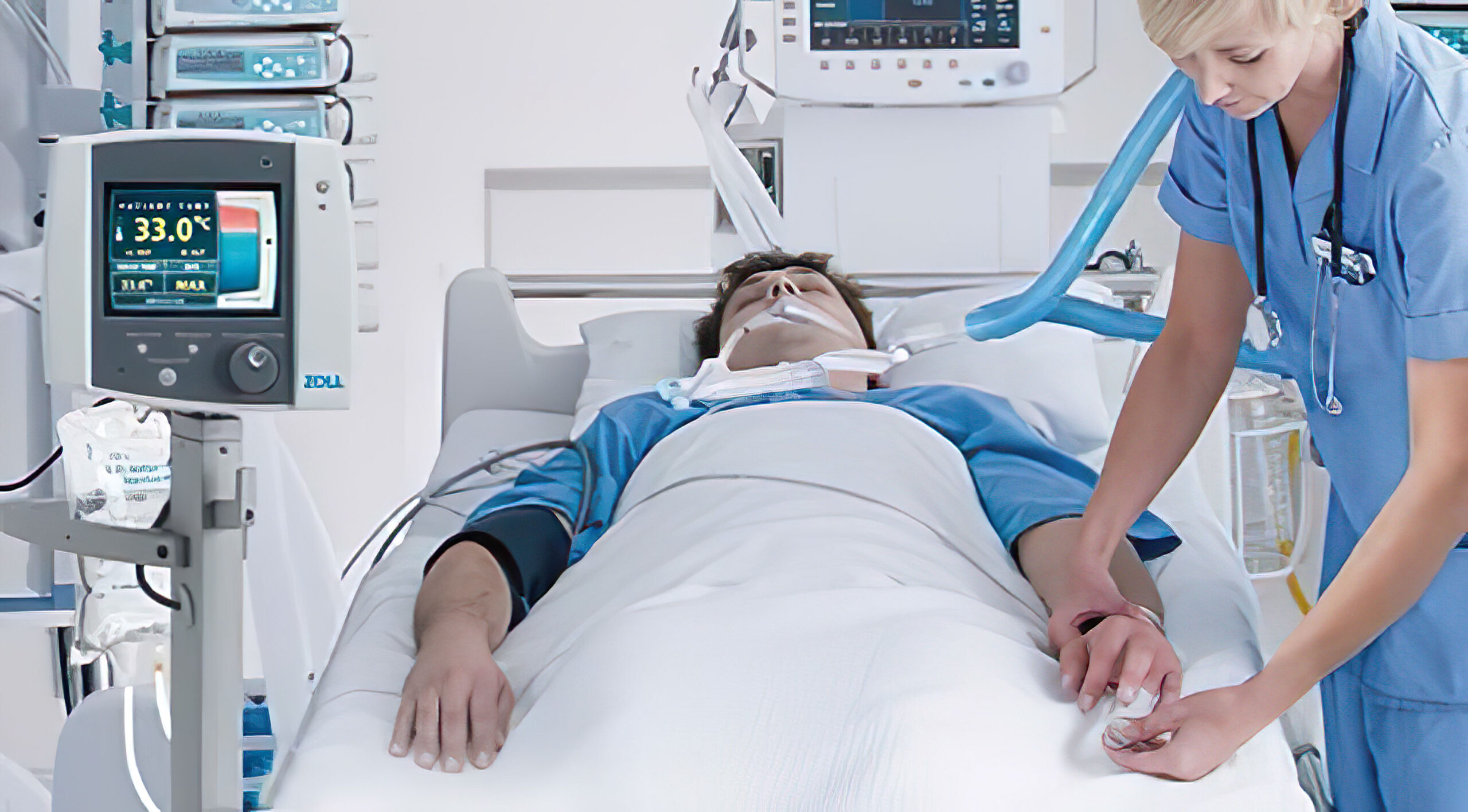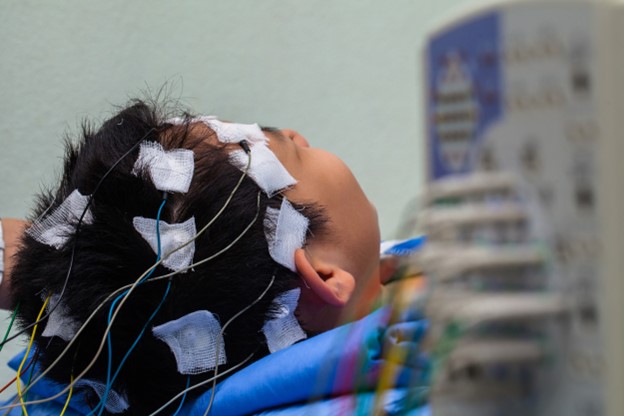Highlights of the Post-Cardiac Arrest Care Algorithm
The AHA Guidelines were revised in 2020 to include the following recommendations based on the post-cardiac arrest algorithm. The algorithm is divided into an Initial Assessment and Stabilization Phase (Boxes 1–3) and an Ongoing Assessment and Treatment phase (Boxes 4–8).
Box 1: ROSC
Post cardiac arrest care begins when the patient .These recommendations include the following steps after ROSC has occurred:
Box 2: Optimizing Oxygenation and Ventilation
This step includes maintaining a patent airway with any necessary airway and providing supplemental oxygen to keep oxygen saturations between 92 and 98%. If available, waveform capnography should be implemented to verify the patient’s ventilation status (requiring advanced airway insertion of if not already intubated). For intubated patients, it is essential to avoid hyperventilation.
The team should start at 10 breaths per minute and target an ETCO2 between 35 and 45 mm Hg.
The goal should be to maintain a systolic pressure > 90 mm Hg and a MAP > 65 mm Hg. Diagnosing and treating hypotension is necessary for the immediate post-cardiac arrest period. A systolic blood pressure < 90 mm Hg or a MAP < 65 mm Hg warrants intervention to correct hypotension. Vasopressors should be used to improve cardiac output and blood perfusion to the heart and brain.
Patients with hypotension are at risk for higher mortality rates and diminished functional recovery. In contrast, if the team maintains the systolic blood pressure at levels > 100 mm Hg, the patient will exhibit better recovery.
Vasopressors are used to improve cardiac output and perfusion to the heart and brain. Different vasoactive drugs provide various effects on the cardiovascular system, such as alterations in:
- heart rate (chronotropic effects)
- myocardial contractility (inotropic effects)
- electrical conduction (dromotropic effect)
- arterial pressure (vasoconstrictive effects)
- afterload (vasodilator effects)
The clinician must balance the type of vasopressors used and the patient’s clinical condition because most vasopressors are not selective to the receptors upon which they exert their effect. If not properly used and monitored, vasopressors may induce cardiac arrhythmias or worsen myocardial ischemia due to a mismatch between perfusion and increased oxygen demand. Inappropriate use of vasopressors can cause myocardial function to deteriorate further.
Fluid boluses should be used to help maintain blood pressure, particularly when hypovolemia is suspected as being a cause of cardiac arrest. The clinician should administer 1–2 liters of normal saline or lactated Ringer solution. Frequent respiratory assessments should be performed when volume loading a patient to monitor for signs of fluid overload or congestive failure
Box 3: Obtaining a 12-Lead ECG
The team obtains a 12-lead ECG as soon as possible after ROSC to determine if an AMI was the underlying cause of cardiac arrest and the need for reperfusion.
Box 4: Considering Coronary Reperfusion
For patients with STEMI, unstable cardiogenic shock, or need for circulatory support, the provider considers emergency cardiac intervention.
Box 5: Does the Patient Follow Commands?
The ability to follow commands determines whether the patient requires targeted temperature management and EEG monitoring. If the patient does not follow commands, the team proceeds to Box 6. If the patient is awake and alert, they proceed to Box 7.
Box 6: Comatose
The team begins targeted temperature management (TTM) in all patients with a decreased level of consciousness who achieve ROSC after cardiac arrest. The goal is to maintain a constant core temperature between 32°C and 36°C for a minimum of 24 hours.
Other interventions to consider include EEG monitoring, obtaining a CT scan of the brain, and other ongoing interventions.
Studies show that there is a better neurologic outcome when hypothermia is induced. 17
- Preventing fever after targeted temperature management ends is essential to prevent neurologic injury. Prehospital providers should not infuse cold intravenous fluids. (Follow institutional protocols.)
- Prognostication of outcomes for the post-cardiac arrest patient can be done 72 hours after the completion of targeted temperature management. (Note: For the post-cardiac arrest patient who has not undergone targeted temperature management, prognostication of outcomes must be done 72 hours after the Return of Spontaneous Circulation.)
- Patients with brain circulatory death should be evaluated for organ donation. Organs transplanted from cardiac arrest donors have comparable success rates as those organs transplanted from donors with other conditions. Likewise, donated organs from resuscitated cardiac arrest patients that have progressed to brain death perform like those from patients with brain death from other causes.
Key Takeaway
- Clinical Findings Associated with Poor Neurologic Outcome
Absent pupillary reflex to light. - Presence of status myoclonus.
- Absence of N20 somatosensory cortical wave.
- Marked reduction of the gray-white matter ratio on CT scan taken 2 hours from arrest.
- Restriction of diffusion evidenced by MRI at 2 to 6 days after cardiac arrest.
- Absence of EEG reactivity to external stimuli at 72 hours after cardiac arrest.
- Burst suppression or intractable status epilepticus on EEG after rewarming.

Targeted Temperature Management Following ROSC

Patient Undergoing an Electroencephalogram
Box 7: Awake and Alert
When emergency treatment is complete and the patient is stable, they are admitted to the critical care service for ongoing management.
Box 8: Reversible Causes
In all cases, the provider assesses for and treats reversible causes of cardiac arrest. The team should also obtain expert consultation.
Ventilate and Oxygenate
The airway and respirations should be maintained following ROSC. If intubating the patient, use continuing waveform capnography to ensure correct placement. While this verification method has is not well studied for supraglottic airway, the 2015 AHA Guidelines on ECC and CPR recommend waveform capnography in conjunction with clinical verification for all advanced airways. Monitoring is necessary to maintain ventilation and monitor accurate placement.
In all patients, refrain from over-ventilation, including large volumes or rapid breaths. Over ventilation decreases PaCO2 and leads to poor brain perfusion. Additionally, the thoracic pressure will be increased, limiting venous return and cardiac output. Begin with 10 breathes each minute (maximum of 20 each minute) and increase only if needed to achieve a PetCO2 between 35-40 mmHg or PaCO2 between 40-45 mm Hg. Monitor the patients for response and use clinical judgment and individual response to titrate respiratory parameters.
The goal oxygen saturation following ROSC is above 94%, and FiO2, when available, can be decreased to reach this goal. Always ensure the patient does not become hypoxic.
Key Takeaway
Waveform Capnography
Continuing waveform capnography allows immediate feedback regarding placement of the advanced airway or sudden derangements in cardiac output
Evaluate the trend in capnography for either hypo- or hyper-ventilation.
Hypotension
Monitor vitals, including blood pressure, very regularly as it can be unstable. Continuous monitoring with an arterial line may be useful in the period immediately following ROSC. Ensure MAP is over 60 mm Hg or systolic BP is over 90 mm Hg during this time as a sign of adequate perfusion.
As well, monitor the cardiac rhythm with EKG. Any reversible causes of cardiac arrest should be identified and treated, including cardiac arrhythmia or ACS. Ensure IV access is adequate at this point. The initial hypotension management is intravascular fluid with 1-2 L of lactated Ringer’s or normal saline. Titrate as needed for individual patients. Additionally, vasopressor intervention includes:
- IV dopamine: 5-10mcg/kg
- IV norepinephrine: 0.1-0.5 mcg/kg/min
- IV epinephrine: 0.1-0.5 mcg/kg/min
Related Video: Dopamine – ACLS Drugs
Related Video: Epinephrine – ACLS Drugs
Titrate all infusions to avoid hypotension.
Managing ACS
Obtain a 12 lead ECG at ROSC to ensure that cardiac arrest was not due to ACS. If this is the case, the patient will then need acute management using the ACS protocol and determination of appropriateness for reperfusion strategies. Patients who are comatose or require temperature management are still candidates for reperfusion with PCI.
Following cardiac arrest, the patient will need management in the ICU setting. The majority of patients should not be given anti-arrhythmic medications prophylactically, as this has not been supported in the literature. Patients who had VF or pulseless V-Tach associated cardiac arrest may receive lidocaine following ROSC. There is also no known benefit of beta-blockade following cardiac arrest. However, the medication can be given to those with VF or pulseless V-Tach associated with cardiac arrest.
17 Beccaria PF, Turi S, Cristofolini M, et al. Post cardiac arrest therapeutic hypothermia in adult patients, state of art and practical considerations. HSR Proc Intensive Care Cardiovasc Anesth. 2010;2(2):93–103.